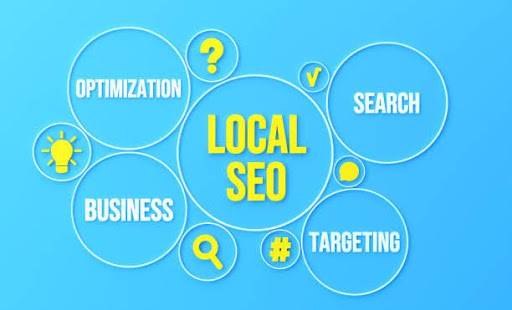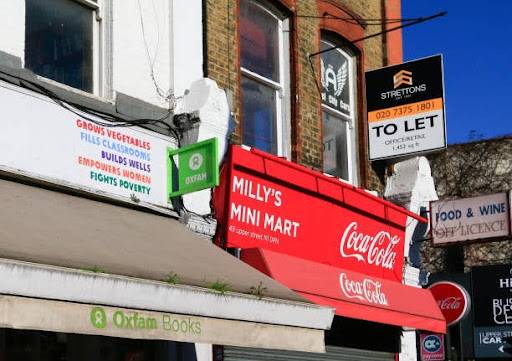“Are You Ready to Unlock the Secrets of On-Page Optimization in Dallas, TX? Join Us on a Captivating Quest to Master the Art of SEO in Dallas, Texas!”
In the dynamic digital sphere of Dallas, TX, on-page optimization is the key to enhancing your web presence. As the sun illuminates this exciting new chapter in SEO, we extend an invitation for you to join us on a voyage—a voyage dedicated to unveiling the intricate art of local on-page optimization. With meticulous care, we have crafted a comprehensive guide that will serve as your steadfast companion throughout this thrilling journey.
In this blog post, you’ll not only explore the ever-evolving local search landscape but also discover the art of wielding on-page optimization to its full potential. We’re here to be your guiding light, helping you navigate the digital wilderness and ensuring that your online presence shines brighter than ever before. Welcome to a story of transformation, where your business becomes the hero, and On-Page Optimization Dallas, TX is the magical elixir that propels you to success.
Understanding the Local Search Landscape For On-Page Optimization Dallas TX”
Before diving into the nitty-gritty of on-page optimization, it’s essential to grasp the local search landscape in Dallas, TX. Local search refers to the process of users seeking products or services within a specific geographic area, making it crucial for local businesses to show up in relevant search results.
Key On-Page Optimization Dallas, TX Techniques
Now that we’ve established the significance of local search in Dallas, let’s explore some key on-page optimization techniques that can elevate your online visibility.
1. Keyword Research
Effective on-page optimization starts with thorough keyword research. Identify the keywords and phrases your target audience is likely to use when searching for products or services in Dallas. Tools like Google Keyword Planner can assist you in this process.
Here are the steps to help you find the right keywords for your website:
- Understand Your Business and Audience
Start by gaining a deep understanding of your business, products, services, and target audience. Who are your ideal customers, and what problems or needs do they have that your offerings address?
- Brainstorm Seed Keywords
Begin with a list of seed keywords related to your business. These are general keywords that describe what you offer. For example, if you run a bakery in Dallas, some seed keywords might be “Dallas bakery,” “fresh bread Dallas,” or “cake delivery Dallas.”
- Competitor Analysis
Analyze your competitors’ websites and SEO strategies. Identify the keywords they are targeting and ranking for. Tools like SEMrush, Ahrefs, or SpyFu can help you uncover your competitors’ keywords.
- Keyword Research Tools
Utilize keyword research tools to expand your list of potential keywords. Some popular tools include:
Google Keyword Planner (free)
SEMrush
Ahrefs
Moz Keyword Explorer
Ubersuggest
KeywordTool.io
- Use long-tail keywords:
Consider long-tail keywords, which are longer and more specific phrases. These often have less competition and can attract highly targeted traffic. For example, instead of “Dallas bakery,” you might target “gluten-free bakery in Dallas” or “custom birthday cakes in Dallas.”
- Use Keyword Variations
Don’t rely solely on exact-match keywords. Include variations, synonyms, and related terms. Search engines are becoming more adept at understanding context, so this approach can capture more relevant traffic.
2. Creating High-Quality Content for On-Site SEO Enhancement in Dallas TX
Creating high-quality content is essential for engaging your audience, attracting traffic to your website, and achieving SEO success. Here are steps to help you create high-quality content:
- Set Clear Goals
Define your content goals. Are you trying to educate, entertain, inspire, or convert your audience? Clear objectives will guide your content creation process.
- Thorough Research
In-depth research is the foundation of high-quality content. Investigate your topic thoroughly, using reliable sources. Gather data, statistics, and examples to support your content.
- Unique and Valuable Insights
Offer unique insights, perspectives, or solutions in your content. Avoid duplicating what’s already available online. Provide value that sets your content apart.
- Structured Content:
Organize your content logically with a clear structure. Use headings, subheadings, bullet points, and numbered lists to make your content scannable and easy to digest.
- Engaging Headlines:
Craft compelling headlines that grab readers’ attention and accurately represent the content. Use power words, questions, or intriguing statements.
- Use Visuals:
Incorporate visuals like images, infographics, and videos to enhance your content. Visual elements break up text, make content more engaging, and aid in conveying complex information.
- Clear and Concise Writing
Write in a clear and concise manner. Avoid jargon and overly complex language. Use short sentences and paragraphs for readability.
- Storytelling
If applicable, use storytelling to connect with your audience emotionally. Share anecdotes, real-life examples, or case studies to illustrate your points.
3. Optimize Meta Tags For On-Page Optimization Dallas, TX
Meta tags are snippets of code in the HTML of a web page that provide information about the content of that page to search engines and website visitors. They play a crucial role in SEO (Search Engine Optimization) and can influence how your web page appears in search engine results pages (SERPs) and when shared on social media. There are several types of meta tags, but the most common ones are the meta title tag, meta description tag, and meta keywords tag (although the latter is less important today).
Here are clear steps on how to optimize meta tags for your web pages:
- Identify target keywords
Before you optimize your meta tags, identify the target keywords for each specific page on your website. These keywords should be relevant to the content on that page and reflect what users might search for to find that content.
- Avoid duplicating Meta Tags
Each page on your website should have unique meta tags. Avoid using identical titles and descriptions across multiple pages, as this can confuse search engines and users.
- Use Schema Markup (Optional):
Schema markup is a structured data format that can enhance your meta tags with additional information, such as ratings, reviews, events, and more. Adding schema markup can make your listing in search results more attractive and informative.
Meta Keywords (Optional and Mostly Ignored):
4. Localizing your Content For On-Page Optimization Dallas, TX
Tailor your content to suit the Dallas audience. Incorporate references to local landmarks, events, and attractions. This not only makes your content relevant but also enhances your chances of appearing in local search results.
- Test and Monitor:
Localizing your content involves adapting it to the specific preferences, needs, and cultural nuances of a target geographical location or audience. Here are the steps to effectively localize your content:
- Identify Your Target Audience:
Determine the specific location or region you want to target. Understand the demographics, preferences, and cultural characteristics of your target audience in that area.
- Keyword Research for Local SEO:
Conduct keyword research focused on the local market. Identify relevant keywords, including location-based terms that your target audience is likely to use when searching for products or services.
- Content Audit:
Review your existing content to identify pieces that are suitable for localization. Prioritize content that is likely to resonate with the local audience.
- Translate Content:
If necessary, translate your content into the local language(s). Consider hiring professional translators or using reliable translation tools. Ensure that the translated content accurately conveys the original message and maintains cultural sensitivity.
- Localize URLs:
If possible, use localized URLs or subdomains (e.g., yoursite.co.uk for the UK market) to signal to search engines and users that your content is specifically tailored to that region.
Remember that while optimizing meta tags is essential for SEO, it’s just one aspect of a Ensuring that your website is mobile-friendly is crucial in today’s digital landscape, as a significant portion of web traffic comes from mobile devices. Here are the steps to make your website mobile-friendly:
5. Mobile-Friendly Design For On-Page Optimization Dallas, TX
Given the prevalence of mobile users, having a mobile-friendly website is non-negotiable. Google favors mobile-responsive sites, and a positive user experience on mobile can significantly impact your search rankings. Choose a responsive web design approach, which means that your website layout and content will automatically adapt to various screen sizes, including those of mobile devices. This provides a consistent and user-friendly experience across all devices.
- Mobile-Friendly Themes or Templates
If you’re using a content management system (CMS) like WordPress, Joomla, or Drupal, select a mobile-responsive theme or template. Many modern themes are designed to be mobile-friendly by default.
- Optimize Images and Media
Compress and optimize images and media files to reduce their file size without compromising quality. Large files can slow down your website’s loading speed, which is critical for mobile users.
- Readable Fonts and Text Size
Use legible fonts and ensure that the text size is comfortable to read on smaller screens. Aim for a font size of at least 16px for body text and use a responsive font that adjusts for different screen sizes.
- Touch-Friendly Elements:
Ensure that buttons, links, and interactive elements are appropriately sized and spaced to accommodate touch input. Buttons should be large enough for users to tap without accidentally clicking neighboring elements.
- Optimize Navigation
Simplify your website’s navigation menu for mobile users. Use collapsible menus, hamburger icons, or a single dropdown menu to conserve screen space.
- Page Load Speed
Optimize your website for fast loading on mobile devices. Minimize HTTP requests, use browser caching, and reduce server response times. Google’s PageSpeed Insights tool can help identify areas for improvement.
Unlock the Secrets of Dallas, TX, On-Page Optimization with Local SEO GMB Marketing!
When it comes to mastering on-page optimization in Dallas, TX, look no further than Local SEO GMB Marketing. They’re your go-to experts for unraveling the secrets of SEO and supercharging your online presence. Are you ready to embark on this transformative journey with us?”
Local SEO GMB Marketing has the key to unlocking this treasure trove of SEO knowledge. With their expertise, you’ll discover how to fine-tune your website, tailor your content, and dominate the local search landscape. No longer will you be lost in the digital crowd; you’ll be the beacon that guides potential customers right to your doorstep.








